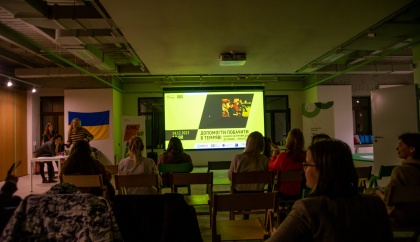
“News accessible to everyone” is the title of a guide for government authorities and media representatives that helps make crucial news more accessible to people with visual impairments.
Reprinted from Hromadske Radio.
The guide was developed as part of the advocacy project “Information Accessibility for Blind and Partially Sighted People,” implemented by the Docudays UA Film Club at the Lviv Municipal Library with the support of the DOCU/CLUB Network.
Not all news on social media or websites are accessible for people with visual impairments. Visually impaired and blind people can read the map of shelters and important wartime news using the Screen Reader phone app, but only if the information is available as text. If the information is presented in a graphic image without a text description, Screen Reader cannot recognize it.
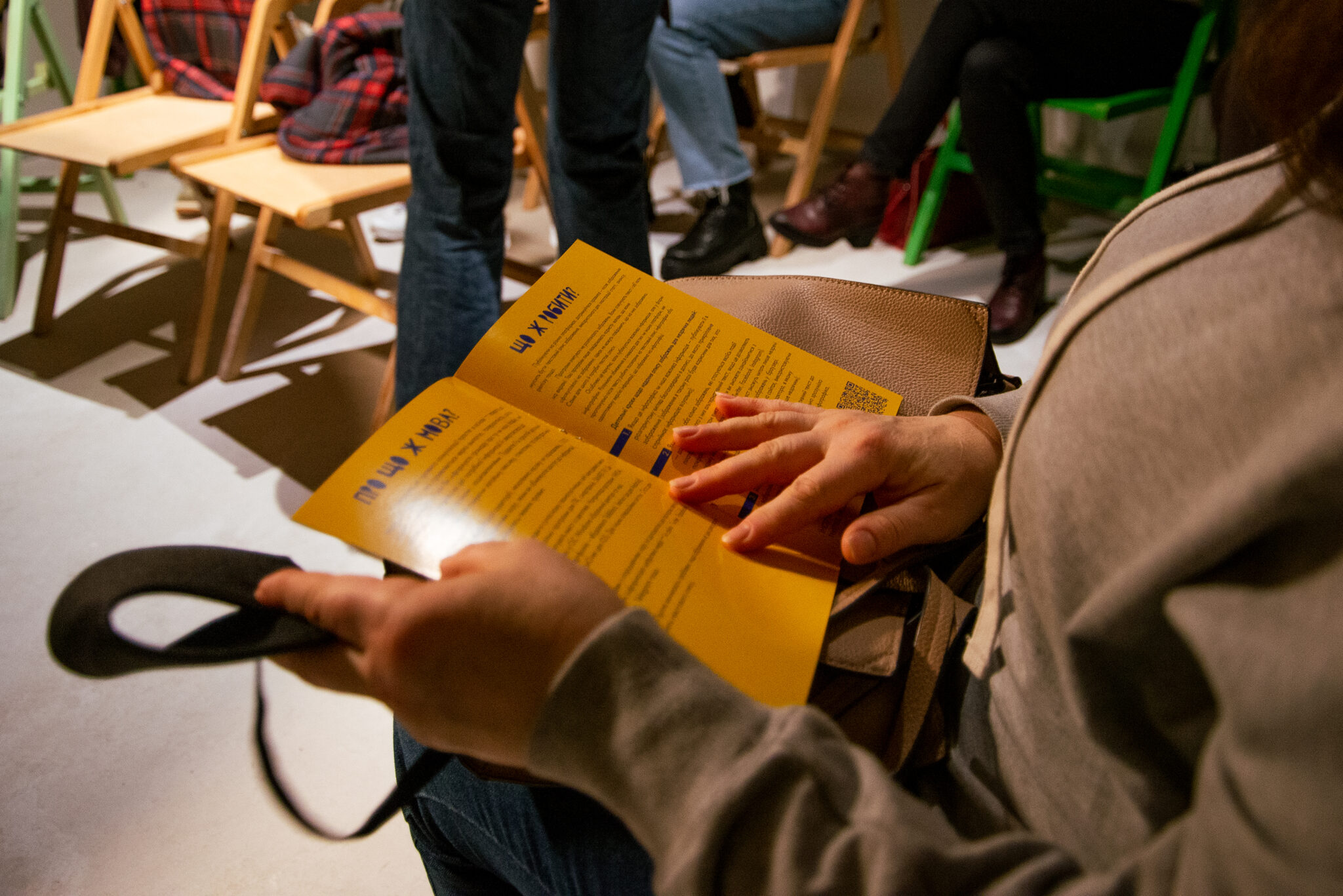
Photo courtesy of Hromadske Radio
According to the National Health Service of Ukraine, during the full-scale invasion, the number of people with visual impairments is growing, and the main reason for this are the military actions. In just 7 months of 2023, doctors have already certified more than 19,000 such diagnoses, which is more than in the entire year of 2022.
According to Dmytro Popov, UNDP Ukraine's digital accessibility consultant and director of the Digital Accessibility Laboratory who attended the discussion, it is important to provide all information not only in the form of images but also as simple tables or text messages.
“After the full-scale invasion began, a lot of maps were published: maps of shelters, maps of working pharmacies, supermarkets, etc. These maps appeared and were updated very quickly, but they were only graphical, and Screen Reader could not recognize them. That is, blind people could not simply find out the location of the nearest pharmacy. At the same time, the well-known Google maps service was and still is accessible to people with visual impairments.
This is why my colleagues and I developed an online service that converted maps into Excel files so that visually impaired people could peruse them. However, we had no time to quickly process a large amount of information,” said Dmytro Popov.
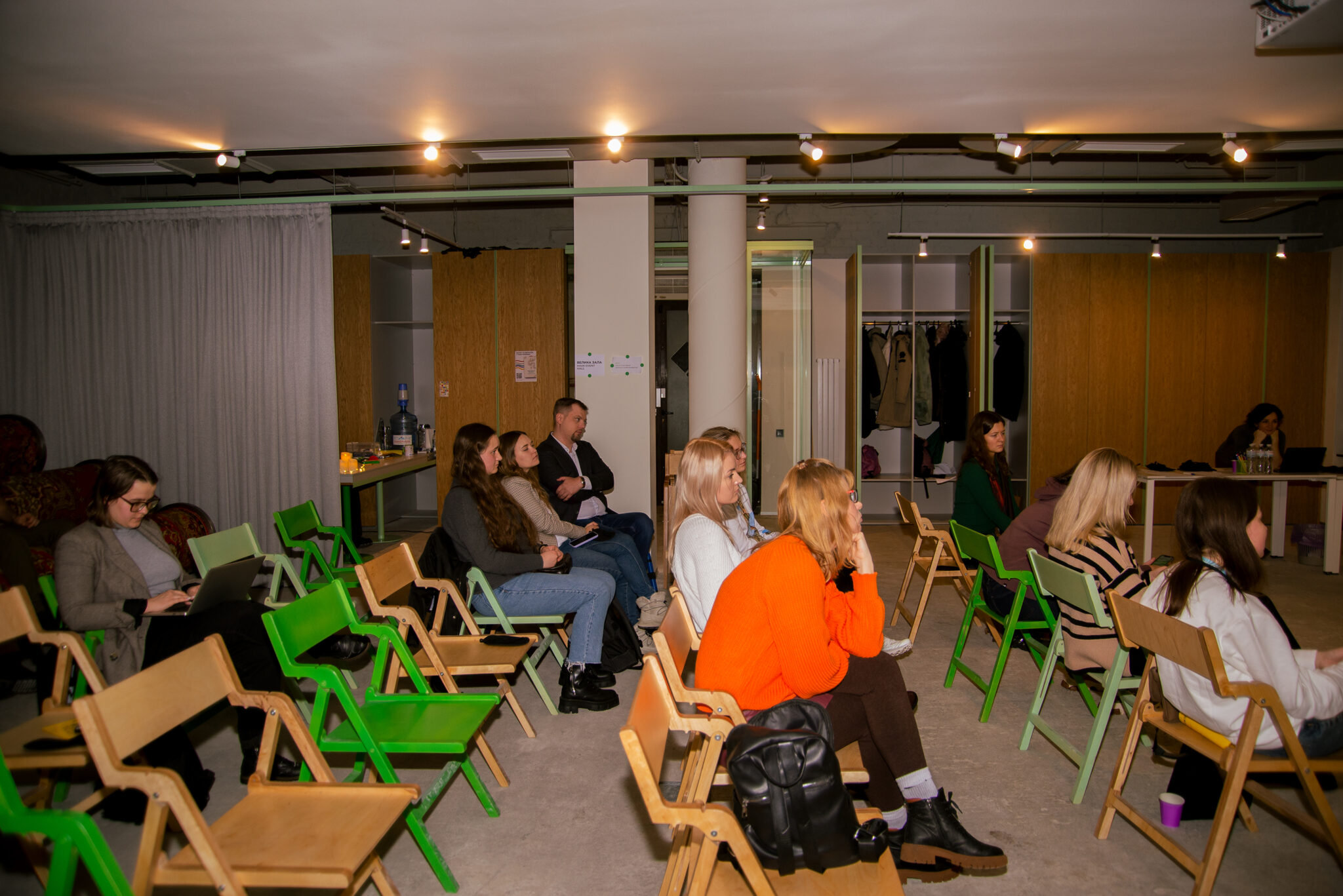
Photo courtesy of Hromadske Radio
Vira Karpinska, the Docudays UA representative at the Lviv Municipal Library, decided to change the situation. She developed the project “News accessible to everyone” and, together with like-minded people, summarized simple recommendations and created a step-by-step guide for media professionals and digital content authors to help make any website or social media page accessible to people with visual impairments. The development team proposed their guide to the Lviv City Council, whose deputies supported the initiative and implemented it for use on official websites and social media. Subsequently, the authors of the guide and the team of the DOCU/CLUB Documentary Film Club Network decided to share the experience of their advocacy campaign in other cities. On December 14, they organized an event at the Ukrainian-Danish Youth House in Kyiv dedicated to ensuring digital accessibility of information for visually impaired people.
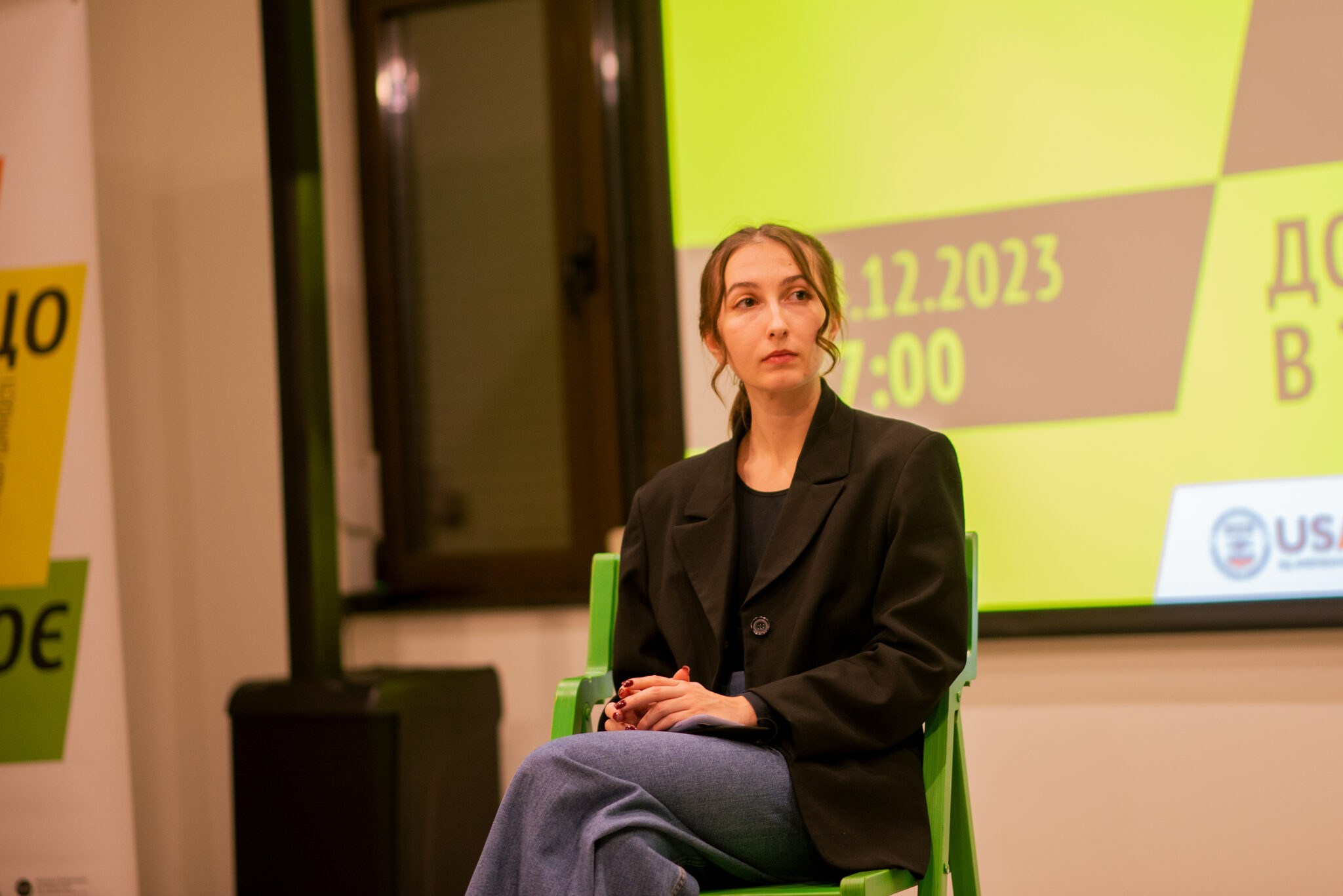
Vira Karpinska/Photo courtesy of Hromadske Radio
Kateryna Alekseyenko, one of the authors of the guide and cultural manager and coordinator of inclusion projects at the Sensoteka (a branch of the Lviv Municipal Library), emphasized the importance of visually impaired people's perception of power outages, among other things:
“My apartment in Lviv is not far from the Ukrainian Society of the Blind. This is an area where a considerable number of visually impaired people live. Everyone remembers last winter, when the blackouts started. At that time, Lvivoblenergo published infographics of power outages everywhere, but visually impaired people could not see them. The information was published in the form of a graphic image and contained many colors. The same was true for evacuation information. That's why we decided to create this guide for the authorities and media representatives, explaining in simple language how to ensure accessibility standards in communication with visually impaired people.”
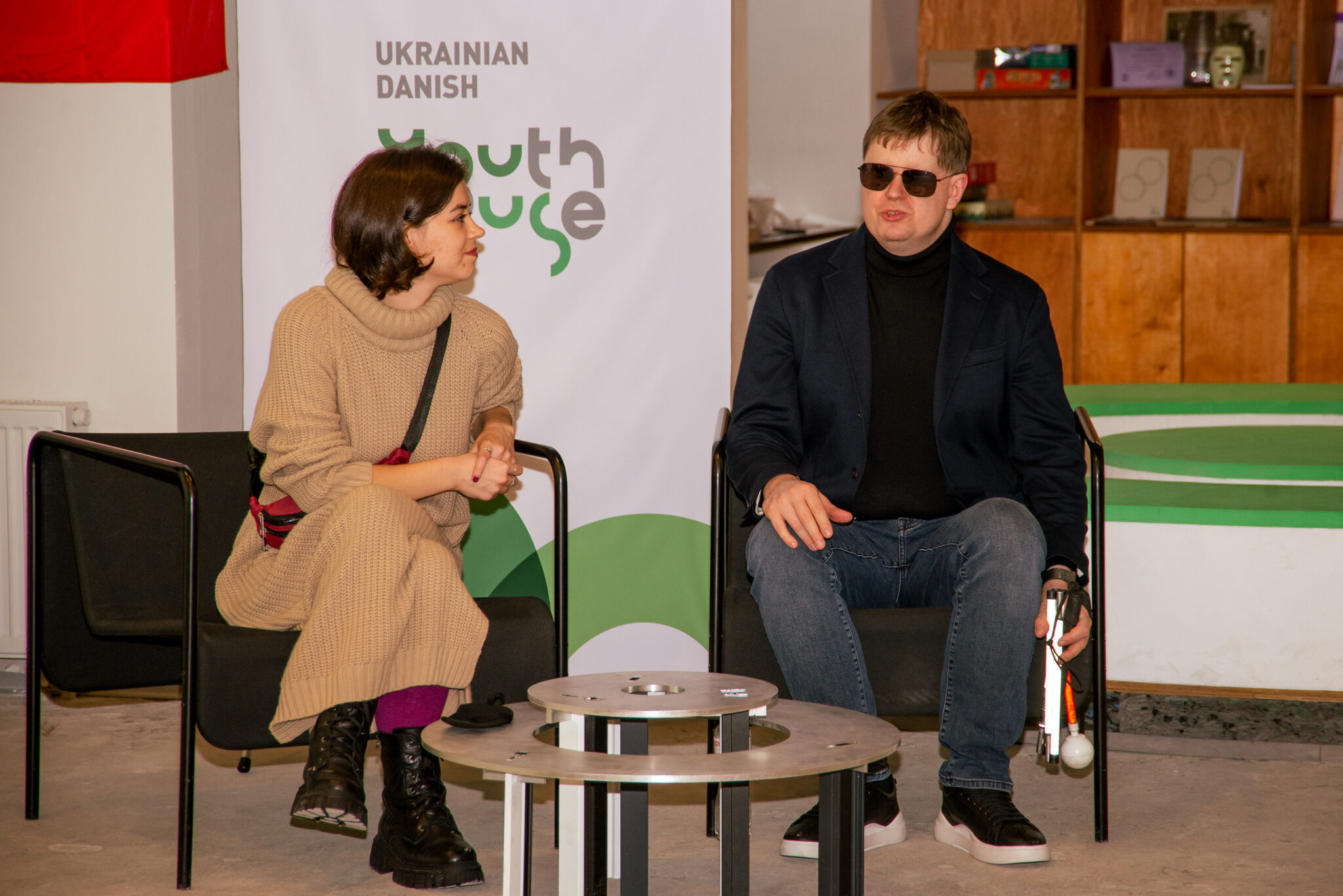
Kateryna Alekseyenko and Dmytro Popov/Photo courtesy of Hromadske Radio
THE LEGISLATIVE ASPECT
In July 2023, Ukrainian government adopted a resolution that obliges state authorities to make their websites accessible in accordance with international standards. As a result, the content on information resources was supposed to become more accessible to people with visual, hearing, or movement impairments.
“According to this resolution, all respective authorities must comply with the standard, which is not yet publicly available. However, there are 50 mandatory criteria that must be met: among them, there are contrast and other requirements for the use of colors. For example, one can't just mark image elements with color without adding text labels. One can't write instructions relying on color, i.e., write “press the green button” or “press the button on the left.” The name of the button or the name of the item must be included. This standard also requires keyboard accessibility, because blind people cannot use a mouse or point at a label, but not all sighted people understand this.
And the most important thing is alternative text. This is a description that explains what appears on the picture. It's crucial to keep it as short as 150 characters, because it's not very convenient or clear when the Screen Reader voices the text for a long time, and the user can easily get confused. One needs to write a simple description: a person is standing, or a person is sitting on a couch and doing something. That is, describe what is depicted. There is no need to invent something new and overthink it,” Dmytro Popov explained.

Photo courtesy of Hromadske Radio
The expert also notes that, when a blind person opens, for example, the Kyiv Digital app or another government application, they will find many buttons without labels. That is, Screen Reader will voice them as a “button,” but the person will not know what kind of button it is. Therefore, all of them should have a description.
“At UNDP, we have been monitoring accessibility for 3 years in a row, and we have tested 100 websites. These include all ministries, the Cabinet of Ministers, the Verkhovna Rada, the website of the President of Ukraine, regional administrations, and some services. We check everything according to 10 criteria. Unfortunately, there are still numerous problems with accessibility. Only one website out of 100 seems to meet all of our 10 criteria. And this is Diia.Barrier-Free, a portal dedicated specifically on the topic of accessibility. But the good news is that there is some progress. Every year, we notice that some websites improve their accessibility, and this is the main thing,” emphasized Dmytro Popov.
WHAT ELSE WILL THE GUIDE HELP WITH?
Kateryna Alekseyenko and Vira Karpinska, authors and editors of the guide, emphasize that it contains step-by-step instructions that will help make anyone’s social media resources accessible for the blind.
“It also contains instructions on how to add alternative text. Using QR codes, you can see how to create alternative text on social media. This is important for officials, journalists, and SMM specialists. If you work out step-by-step on how to add alternative text once, it will soon become a habit, and you will find it quite easy. At the same time, various social networks are already adding alternative text using neural networks, but it is advisable to edit it,” said Kateryna Alekseyenko.
The guide is freely available in the Lviv Municipal Library, so anyone can read it:
“It is really small, and I call it a 'squeeze' because it doesn't contain anything unique, it's not a comprehensive methodology, and we're not aimed at developing something new. It explains how to write texts for the visually impaired in simple words,” says Kateryna Alekseyenko.
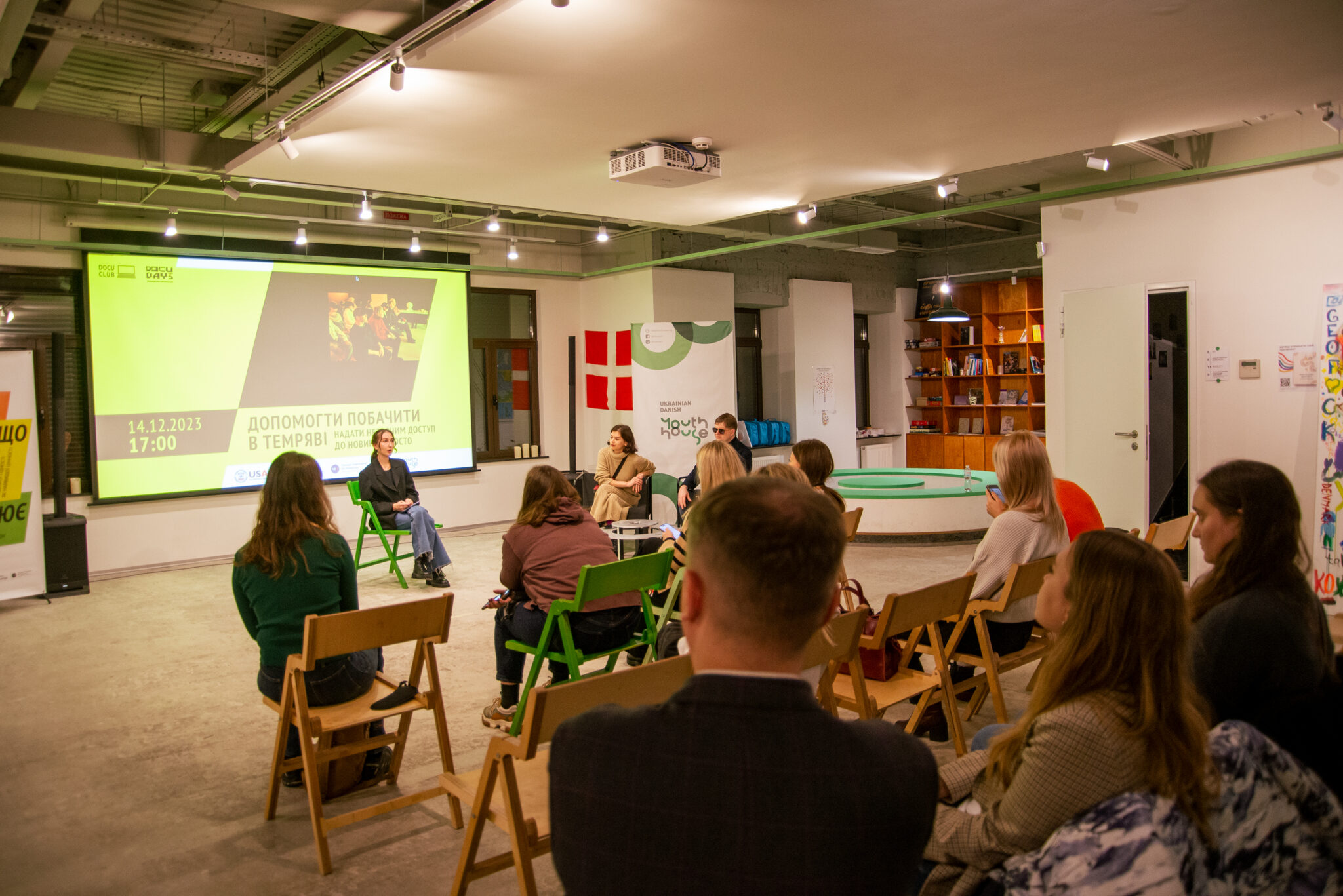
Photo courtesy of Hromadske Radio
The guide is designed in yellow and blue colors, and this is not only because it will be used by Ukrainians. These colors are actually easier to recognize for people with visual impairments.
THE IMPORTANCE OF AUDIO DESCRIPTION
The event also featured a screening of the documentary Giovanni and the Water Ballet with audio description. Due to the voice description of the events on the screen, the film by the Dutch director Astrid Bussink is accessible to people with visual impairments. Viewers were able to watch the film wearing eye masks to feel how blind and visually impaired people perceive information.
“In addition, there is a special application on a smartphone that allows one to download tracks with audio description. Then a person can go to a film screening in a regular cinema and turn on the appropriate audio description, which automatically synchronizes with the movie. This is a very interesting technology, thanks to which blind or visually impaired people can "watch" a film in the cinema together with everyone else,” said Dmytro Popov.
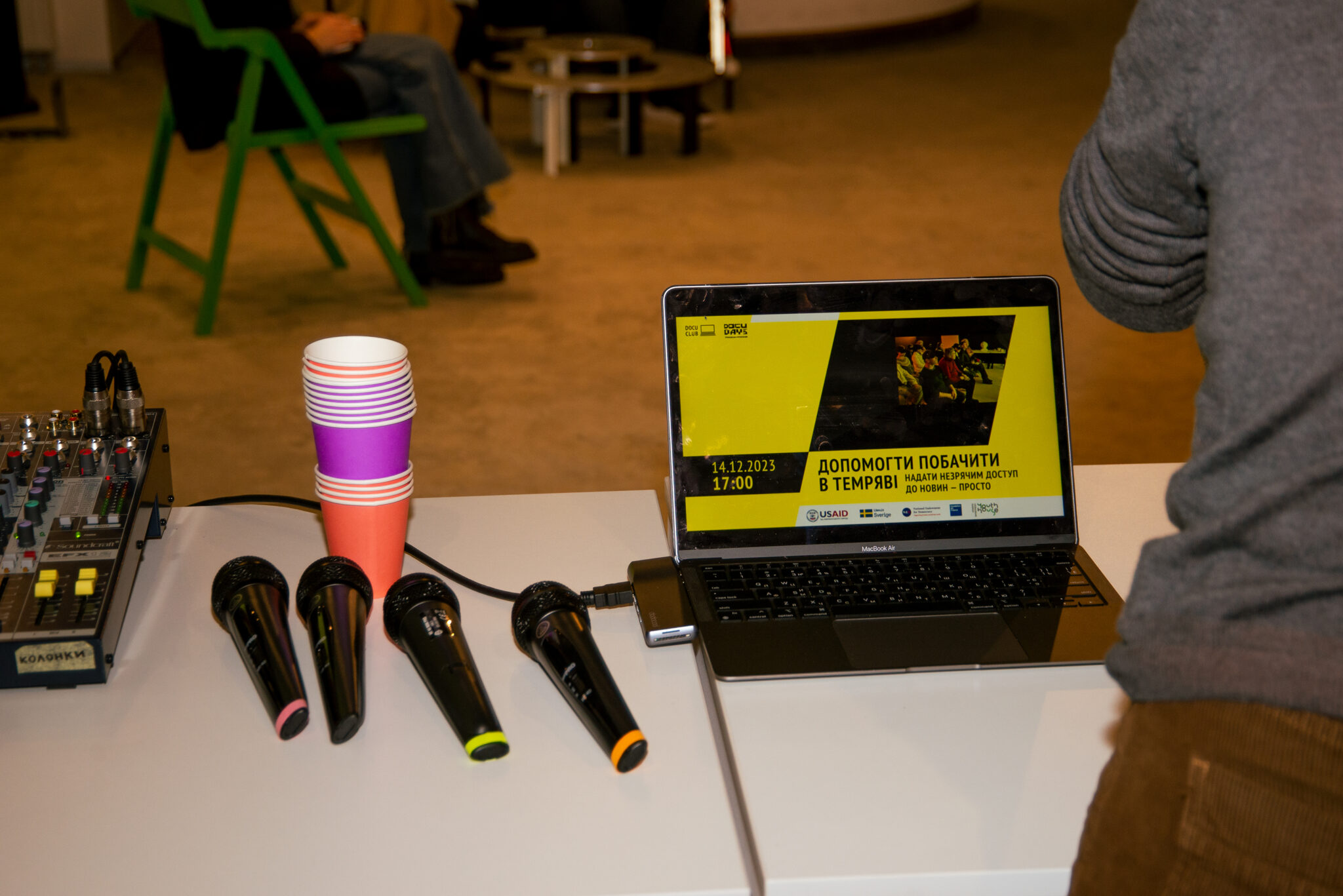
Photo courtesy of Hromadske Radio
At the end of the event, all the participants signed two appeals to the Kyiv City Council and the Kyiv City Military Administration with a proposal to approve the proposals set out in the guide “News accessible to everyone” and recommend them for use in all the KCMA communications. Prior to that, Lviv officials had already implemented the changes in their city.
We hope that communication with visually impaired and blind people will improve and reach an adequate level in all the cities of Ukraine.
The development of the DOCU/CLUB Network is funded by the United States Agency for International Development (USAID), the Embassy of Sweden in Ukraine, the National Endowment for Democracy (NED) and Fondation de France.
The opinions, conclusions, or recommendations are those of the authors and compilers of this publication and do not necessarily reflect the views of the governments or charitable organizations of these countries. The authors and compilers are solely responsible for the content of this publication.



